#Metropolitan Cathedral Basilica of the Holy Saviour
Photo



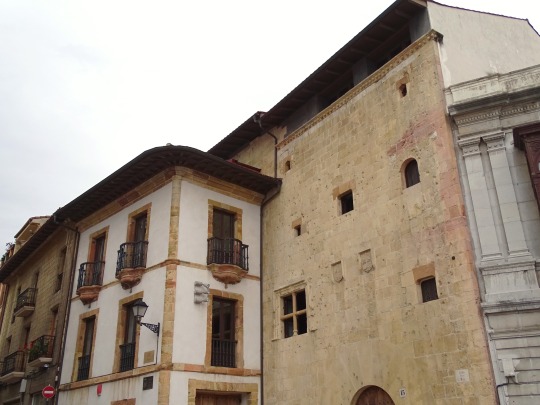






Plaza de la Catedral, Oviedo (No. 3)
The construction of the current [Oviedo Cathedral’s] façade began in the early sixteenth century under the design of Juan de Badajoz. Despite the time of construction, the Gothic style is still used instead of the Renaissance.
A low portico is built with three arches and three doors that give access to each of the naves. It is covered with an almost flat ribbed vault. The central façade, the most important both aesthetically and in size, is crowned with a relief of the Transfiguration and next to it some bas-relief figures representing Fruela I and Alfonso II the Chaste. A little further down some medallions representing the baby Jesus and Saint John child.
The doors made in the eighteenth century in walnut. The door of the central nave contains in the center of each of its leaves an image of San Salvador and Santa Eulalia de Mérida, both patrons of the cathedral and the Principality of Asturias. The temple is accessed through the door on the left.
With a height of 80 m it is divided into five bodies that decrease in size as you ascend. The tower begins integrated into the portico on the four pillars that form the arcade. It is topped with a temple formed by cylindrical towers that end in the arrow of the pinnacle.
In the tower we can find a clock on the second floor, on the top floor the shield of the bishop of Oviedo Cristóbal Rojas Sandoval who held the position at the end of the tower and in each section a window with mainel that hold braided stone otivals.
Famous tower in nineteenth-century Spanish literature because it is one of the inert protagonists of Leopoldo Alas' novel "Clarín" La Regenta. From his height and with the help of a spyglass, Don Fermín de Pas, the Magistral, watched over the city.
Source: Wikipedia
#Church of San Tirso el Real#Plaza de la Catedral#Oviedo#Uviéu#España#Cathedral Square#Oviedo Cathedral#Northern Spain#Southern Europe#Spain#Metropolitan Cathedral Basilica of the Holy Saviour#Cathedral of San Salvador#old town#tourist attraction#landmark#vacation#summer 2021#original photography#Catedral Metropolitana Basílica de San Salvador#Palacio de Valdecarzana-Heredia by Diego de Miranda#cityscape#architecture#Casa de la Rúa
8 notes
·
View notes
Text
SAINT OF THE DAY (December 10)

St. Eulalia descended from one of the most prominent families in Spain in 290 AD.
She was educated in the Christian religion and was taught the sentiments of perfect piety.
From her infancy, she distinguished herself by an admirable sweetness of temper, modesty and devotion.
She showed a great love of the holy state of virginity, and by her seriousness and her contempt of dress, ornaments diversions and worldly company, she gave early signs of her sincere desire to lead a heavenly life on earth.
Her heart was raised above the world before she was thought capable of knowing it so that its amusements, which usually fill the minds of youth, had no charms for her, and every day of her life, she continued to grow in virtue.
Legends say that she was just twelve years old when the bloody edicts of the Emporer Diocletian were issued in 304, by which it was ordered that all persons, without exception of age, sex or profession, should be compelled to offer sacrifice to the gods of the empire.
Eulalia, although young, took the publication of this order as a sign of battle, but her mother, observing her impatient ardor for martyrdom, carried her into the country.
However, the young saint quickly found a means to make her escape by night, and after much fatigue, arrived at Merida before daybreak.
That same morning, as soon as the court convened, she presented herself before the cruel judge, whose name was Dacian, and reproached him with impiety in attempting to destroy souls by compelling them to renounce the only true God.
The governor then commanded her to be seized.
First, employing caresses, Dacian presented to her the advantages which her birth, youth and fortune gave her in the world, and the grief which her disobedience would bring to her parents.
Seeing that these temptations had no effect, he began to threaten her, placing the most cruel instruments of torture before her eyes, saying to her:
"All this you shall escape if you will but touch a little salt and frankincense with the tip of your finger."
Provoked at these seducing flatteries, she threw down the idol, trampled upon the cake which was laid for the sacrifice and spat at the judge -- an action only to be excused by her youth and inattention under the influence of a warm zeal, and fear of the snares which were laid before her.
Upon the judge's order, two executioners began to tear her tender sides with iron hooks, so as to leave the very bones bare.
While this was happening, she called the strokes the trophies of Christ.
Next, lighted torches were applied to her breasts and sides:
under which torment, instead of groans, nothing was heard from her mouth but thanksgivings.
The fire at length catching her hair, surrounded her head and face, and the saint was stifled by the smoke and flame.
History says that a white dove seemed to come out of her mouth and to wing its way upward when the holy martyr expired -- at which prodigy the executioners were so much terrified that they fled and left the body.
Her relics are kept with great veneration at Oviedo, where she is honored as patroness.
The Roman Martyrology mentions her name on December 10.
---------------
Veneration of Eulalia was already popular with Christians by AD 350.
Relics from her were distributed through Iberia.
Bishop Fidelis of Merida rebuilt a basilica in her honour around 560 AD.
Her shrine was the most popular in Visigothic Spain.
In 780, her body was transferred to Oviedo by King Silo.
It lies in a coffin of Arab silver donated by Alfonso VI in 1075.
In 1639, she was made patron saint of Oviedo.
Source: Catholic Ireland
NOTE:
The Metropolitan Cathedral Basilica of the Holy Saviour or Cathedral of San Salvador is a Roman Catholic church and minor basilica in the centre of Oviedo, in the Asturias region of northern Spain.
#Saint of the Day#St. Eulalia#Oviedo#Metropolitan Cathedral Basilica of the Holy Saviour#Cathedral of San Salvador
14 notes
·
View notes
Photo
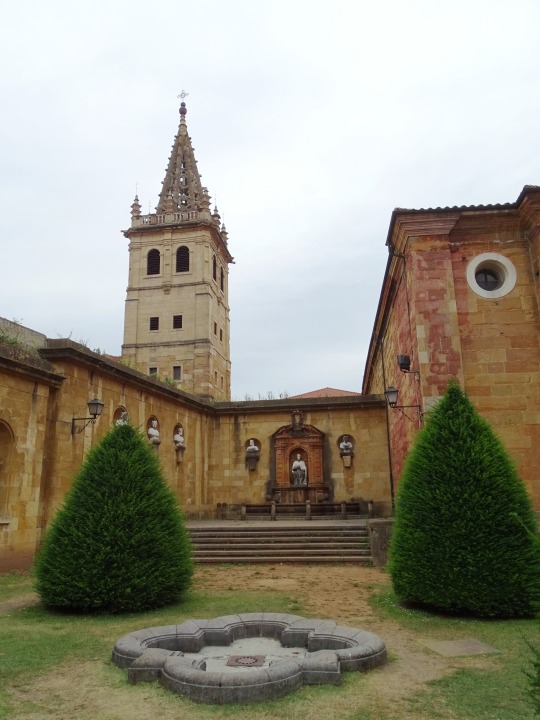
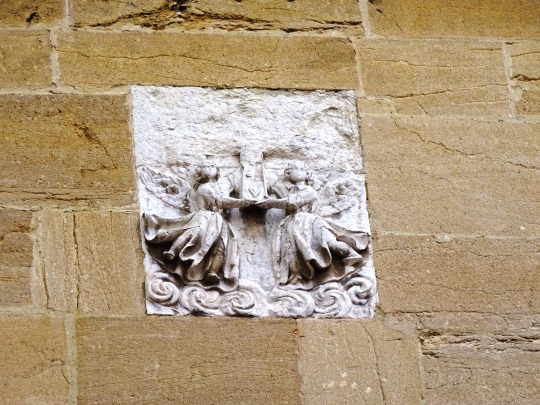
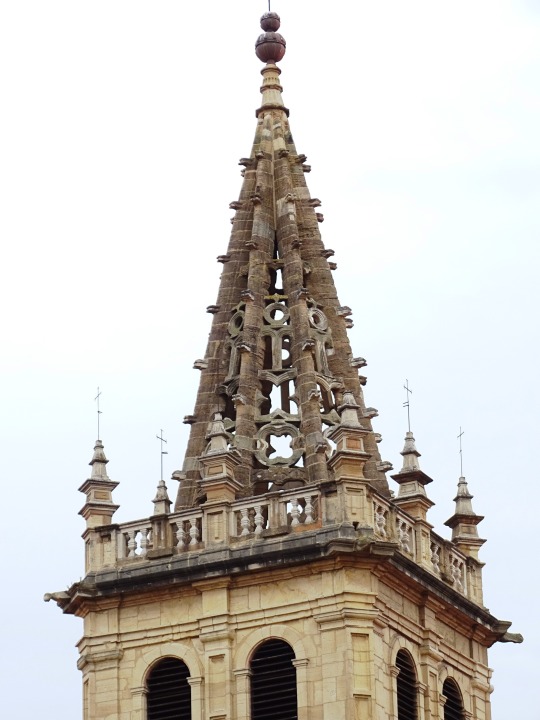
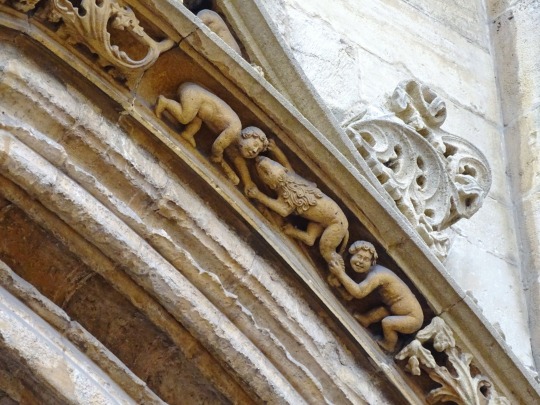


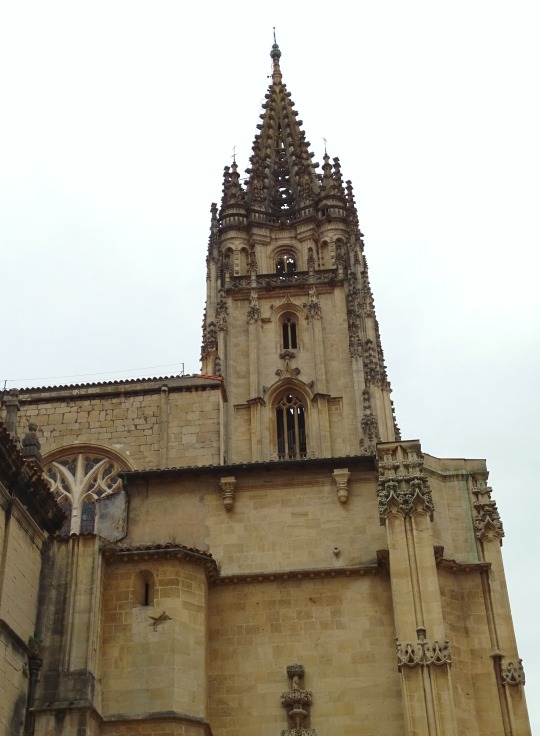

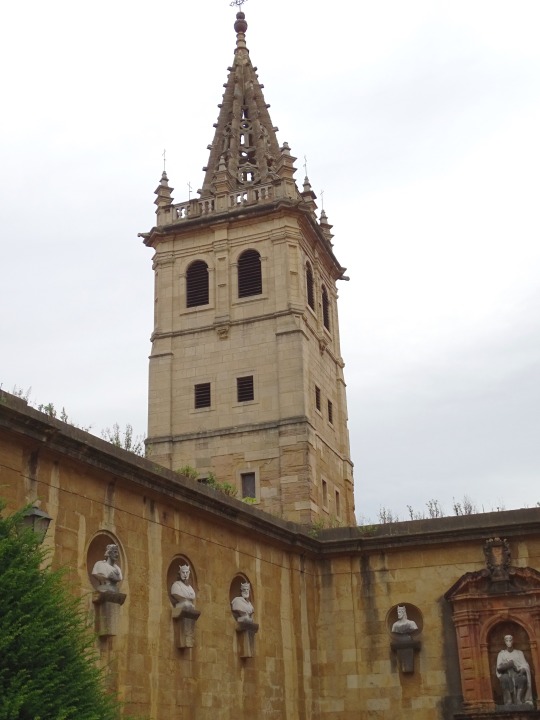

Oviedo Cathedral, Spain (No. 2)
The cathedral was restored in the 12th century by Archbishop Pelagius of Oviedo, the chronicler. Bishop Fernando Alfonso (1296–1301) undertook another restoration of the chapter-house, and his successor, Fernando Alvarez (1302–1321), began the cloister. At the end of the 13th century Gutierre de Toledo began the new Gothic basilica, the principal chapel bearing his arms, though it was completed by his successor Guillén. Diego Ramirez de Guzmán (1421–41) built the two chapels of the south transept (now replaced by the sacristy), the old entrance to the church, and the gallery of the cloister adjoining the chapter-house. Alonzo de Palenzuela (1470–85) completed the other part of the transept. Juan Arias (1487–97) left his cognizance, the fleur-de-lys and four scallops, on the nave. Juan Daza (1497��1503) erected the grille of the choir; Valerano (1508–12) added the stained-glass windows. Diego de Muros, founder of the great college at Salamanca known as the Oviedo, had the crestings of the porch wrought by Pedro de Bunyeres and Juan de Cerecedo, while Giralte de Bruselas and Juan de Balmaseda completed in the years 1512 to 1517 the carving of the precious altarpiece ordered by Valeriano Órdoñez de Villaquirán. Cristóbal de Rojas (1546–56) affixed his coat-of-arms to the completed tower, with its octagonal pyramid, one of the marvels of Gothic architecture.
Source: Wikipedia
#Alfonso II of Aragon#Metropolitan Cathedral Basilica of the Holy Saviour#Oviedo#Cathedral of San Salvador#Catedral Metropolitana Basílica de San Salvador#Uviéu#Spain#Northern Spain#Southern Europe#Rodrigo Gil de Hontañón#original photography#summer 2021#architecture#exterior#cityscape#landmark#tourist attraction#Jardín de los Reyes#Plaza de la Catedral#travel#vacation#sculpture#España#Asturias
3 notes
·
View notes
Photo










Oviedo, Spain (No. 1)
Oviedo (Asturian: Uviéu) is the capital city of the Principality of Asturias in northern Spain and the administrative and commercial centre of the region. It is also the name of the municipality that contains the city. Oviedo is located approximately 24 km (15 mi) southwest of Gijón and 23 km (14 mi) south of Avilés, both of which lie on the shoreline of the Bay of Biscay. Oviedo's proximity to the ocean of less than 30 kilometres (19 mi) in combination with its elevated position with areas of the city more than 300 metres above sea level causes the city to have a maritime climate, in spite of its not being located on the shoreline itself.
Source: Wikipedia
#San Francisco Park#Oviedo#Asturias#Plaza de la Escandalera#architecture#cityscape#tourist attraction#landmark#Northern Spain#Southern Europe#vacation#Monument to José Tartiere by Manuel Álvarez Laviada and Víctor Hevia#summer 2021#Metropolitan Cathedral Basilica of the Holy Saviour#Cathedral of San Salvador#Parliament of the Principality of Asturias#Santa Lucia building#España#Spain
2 notes
·
View notes
Photo
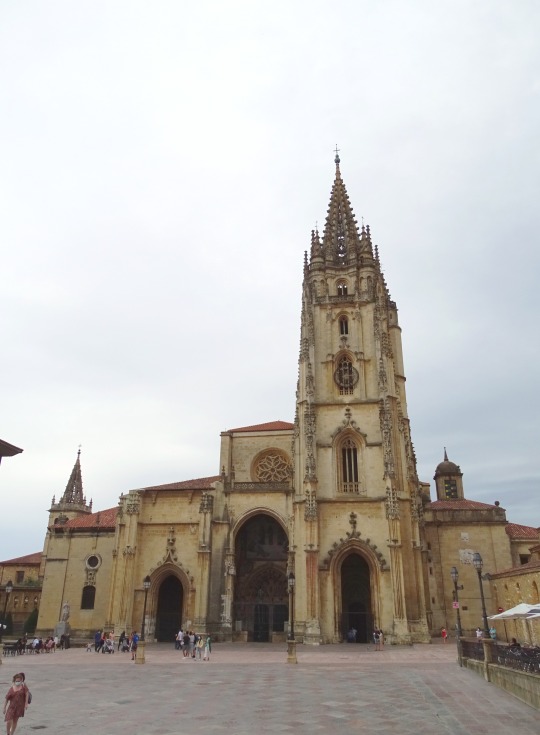
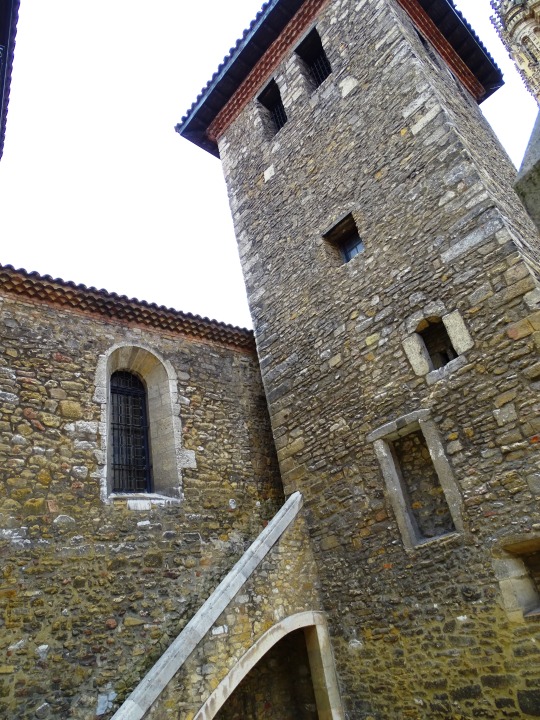
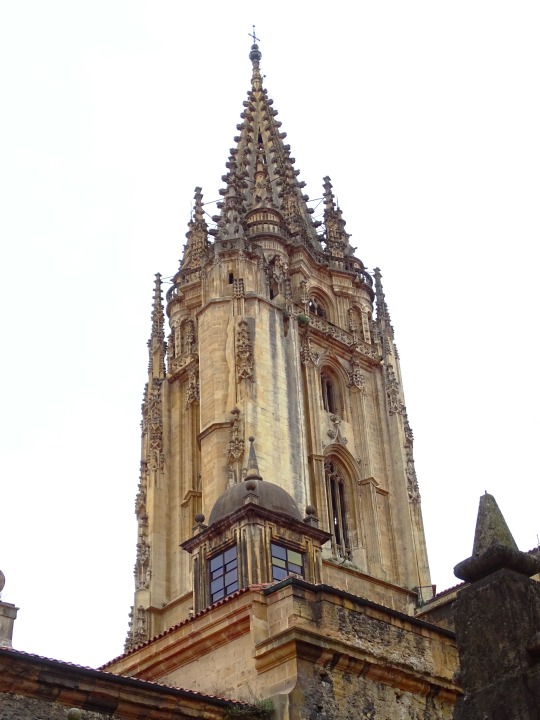





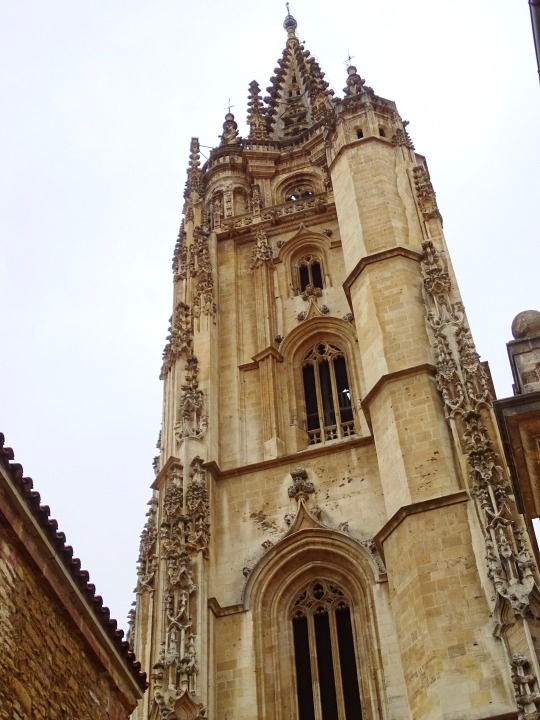
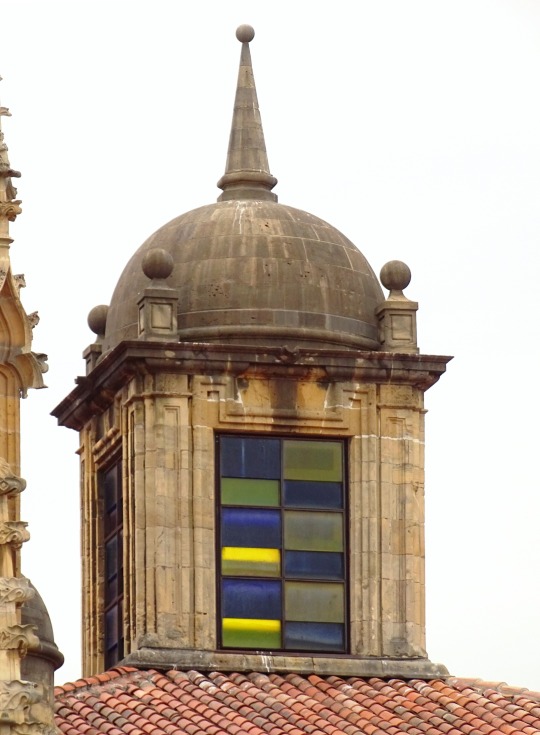
Oviedo Cathedral, Spain (No. 3)
At last, Oviedo episcopate decided to undertake the construction of a new cathedral: this implied the gradual demolition of the old pre-Romanesque basilica, which was probably regarded as old fashioned and inconvenient. Bishop Gutierre de Toledo fostered the erection of his own private funerary chapel (destroyed during the Early Modern period) and the main chapel, a poligonal apse preceded by a square section: the late Gothic altarpiece and the Baroque ambulatory have modified the appearance of this sanctuary, whose walls were originally pierced by two levels of windows. The works evolved at a slow pace, and by 1451 only the main chapel had been concluded. However, during the second half of the 15th century this situation was reversed, and by 1500 both the transept and the three aisles were finished. According to some scholars, there must have existed a first, "general" draft inspired by certain French models, like the Bayonne Cathedral: in any case, this initial draft would be altered as the construction works progressed. By 1450, we find Nicolás de Bar and Nicolás de Bruselas, two master builders from Northern Europe, supervising the Oviedo workshop: apparently, it was during their direction when the new flamboyant style was introduced. After them, Spanish master builders Juan de Candamo (between 1458 and 1489) and Bartolomé de Solórzano (between 1492 and 1498) assumed the direction of the cathedral workshop, building the central and side aisles, as well as the innovative vaults of the central aisle, with multiple ribs and detached tracery pieces. By 1500, the cathedral was almost finished, with exception of its western facade: that very year, master builder Juan de Badajoz "el Viejo" ("the Elder") became the new director of the episcopal workshop, starting the construction of a prominent narthex which would form a spacious passage, working as a covered street: it must be reminded that the original surroundings of Oviedo Cathedral were cluttered with houses, and the walkable areas were very narrow, so this street-like narthex provided an interesting, urbanistic solution. Initially, this narthex was going to be topped by two twin towers, but after 1507 the Oviedo episcopate decided to build only a tower, which would be erected over the narthex's Southern gate: despite traditional accounts, this decision did not respond to a lack of funds, because the cathedral was actually a well-financed workshop. Indeed, the erection of a huge, single bell tower instead of two smaller twin towers, was a popular solution during the Late Middle Ages in places like Southern Germany, Switzerland and the Atlantic coast of France. Oviedo Cathedral's magnificent tower was finished in 1551, after the consecutive intervention of master builders Pedro de Bueras, Pedro de la Tijera and Juan de Cerecedo "el Viejo" ("the Elder"): in 1575, lightning destroyed the original pierced spire, which was rebuilt by Rodrigo Gil de Hontañón combining Gothic and Renaissance elements. The main chapel's altarpiece, which combines statuary and paintings in a gilded, wooden frame, is an excellent example of the transition from Late Gothic to Renaissance.
Source: Wikipedia
#Metropolitan Cathedral Basilica of the Holy Saviour#Cathedral of San Salvador#Catedral Metropolitana Basílica de San Salvador#Oviedo#Uviéu#España#Asturias#Northern Spain#Southern Europe#old town#architecture#detail#exterior#original photography#summer 2021#tourist attraction#landmark#Plaza de la Catedral#Spain#tower#façade
1 note
·
View note
Photo



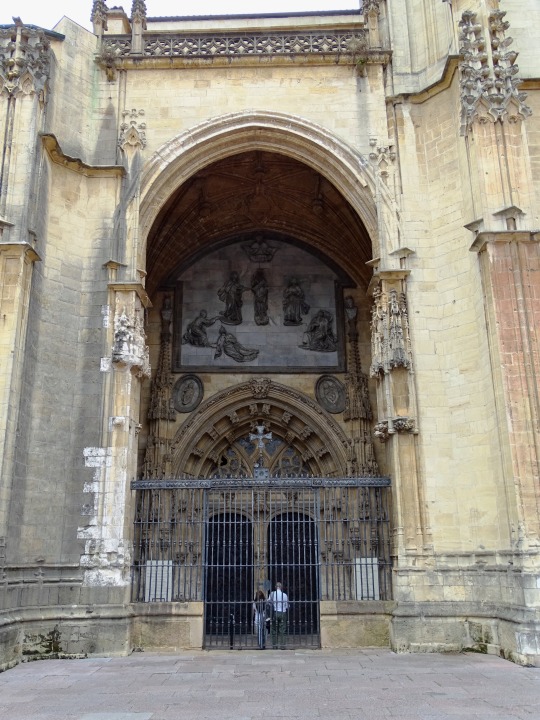

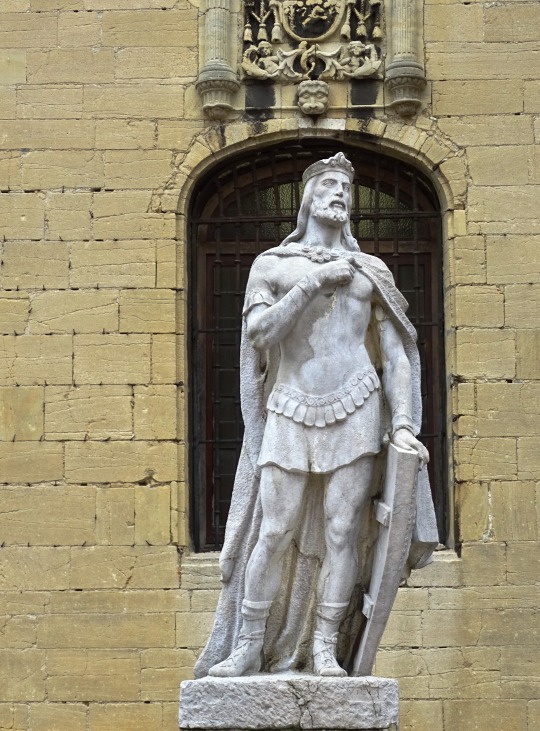
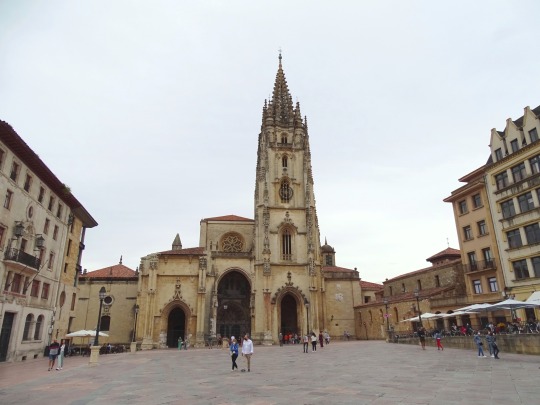
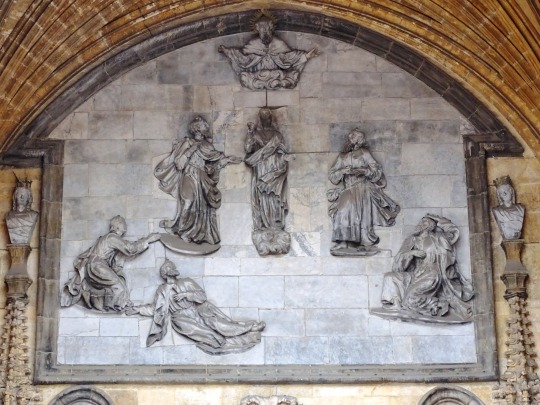
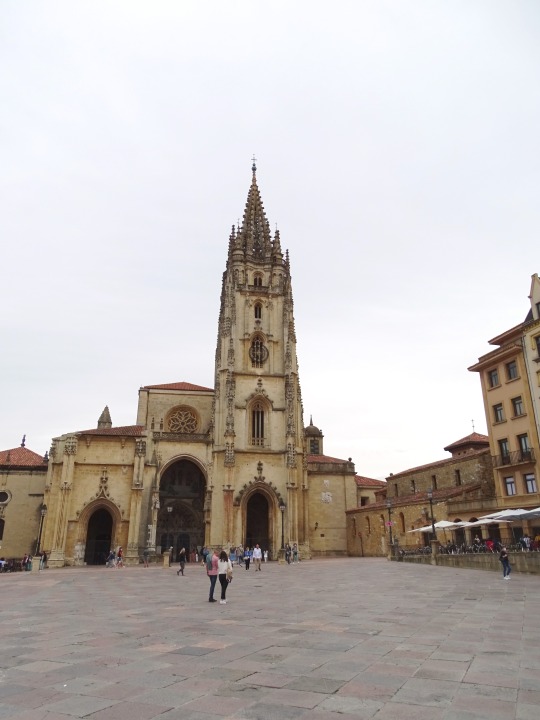
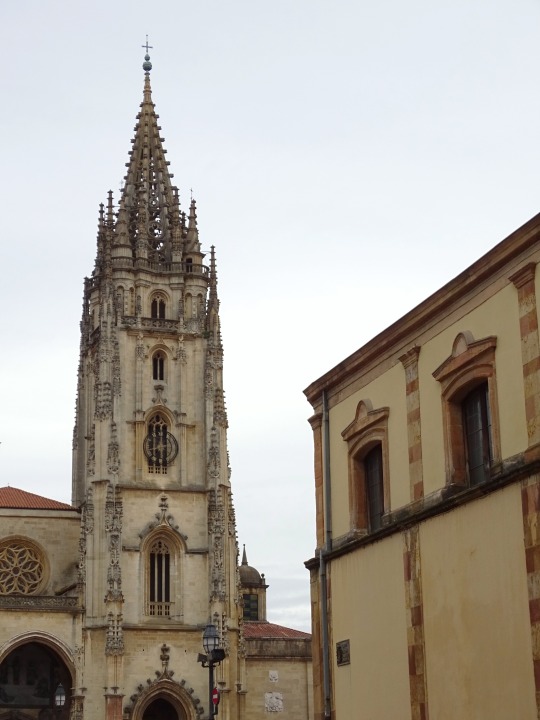
Oviedo Cathedral, Spain (No. 1)
The Metropolitan Cathedral Basilica of the Holy Saviour or Cathedral of San Salvador (Spanish: Catedral Metropolitana Basílica de San Salvador, Latin: Sancta Ovetensis) is a Roman Catholic church and minor basilica in the centre of Oviedo, in the Asturias region of northern Spain.
The Cathedral of San Salvador of Oviedo today displays an array of architectural styles, from Pre-Romanesque to Baroque, including Romanesque, Gothic and Renaissance parts.
The church began as a large Pre-Romanesque basilica in the present location of the Gothic cathedral, but nothing more is known about that first building, built by order of King Alfonso II of Asturias.
The cathedral was founded by King Fruela I of Asturias in 781 AD, and enlarged in 802 by his son Alfonso II of Asturias known as Alfonso the Chaste, who made Oviedo the capital of Kingdom of Asturias, and resided in Oviedo with his court. He created the See of Oviedo in 810. The present edifice was begun by Bishop Gutierre of Toledo in 1388, and the tower added by Cardinal Francisco Mendoza de Bobadilla in 1528.
Source: Wikipedia
#Cathedral of San Salvador#Metropolitan Cathedral Basilica of the Holy Saviour#Catedral Metropolitana Basílica de San Salvador#Oviedo Cathedral#España#Rodrigo Gil de Hontañón#Oviedo#Uviéu#Asturias#Northern Spain#Spain#Southern Europe#exterior#original photography#tourist attraction#landmark#old town#clock#Monumento a Alfonso II el Casto#tower#summer 2021#travel#vacation#square#Plaza de la Catedral
1 note
·
View note
Photo

Empty Street
What do you think about my pic?
#Oviedo#Metropolitan Cathedral Basilica of the Holy Saviour#architecture#Cathedral of San Salvador#Asturias#arch#cityscape#street scene#lantern#old town#medieval architecture#tourist attraction#landmark#vacation#travel#Spain#España#Northern Spain#Southern Europe#summer 2021#original photography#photo of the day#What do you think about my pic?#fence#old houses
4 notes
·
View notes
Photo

Tranquility
What do you think about my pic?
#Oviedo#Asturias#Metropolitan Cathedral Basilica of the Holy Saviour#Spain#Oviedo Cathedral#Cathedral of San Salvador#summer 2021#travel#vacation#Catedral Metropolitana Basílica de San Salvador#Rodrigo Gil de Hontañón#architecture#cityscape#tourist attraction#landmark#courtyard#España#Southern Europe#Northern Spain#photo of the day#What do you think about my pic?#lawn#bush
1 note
·
View note